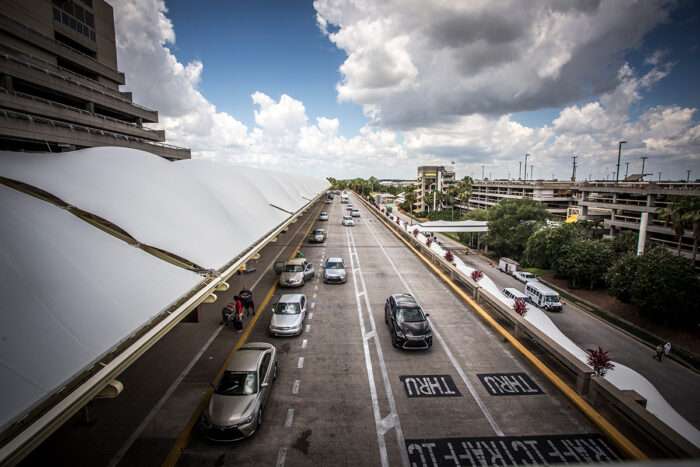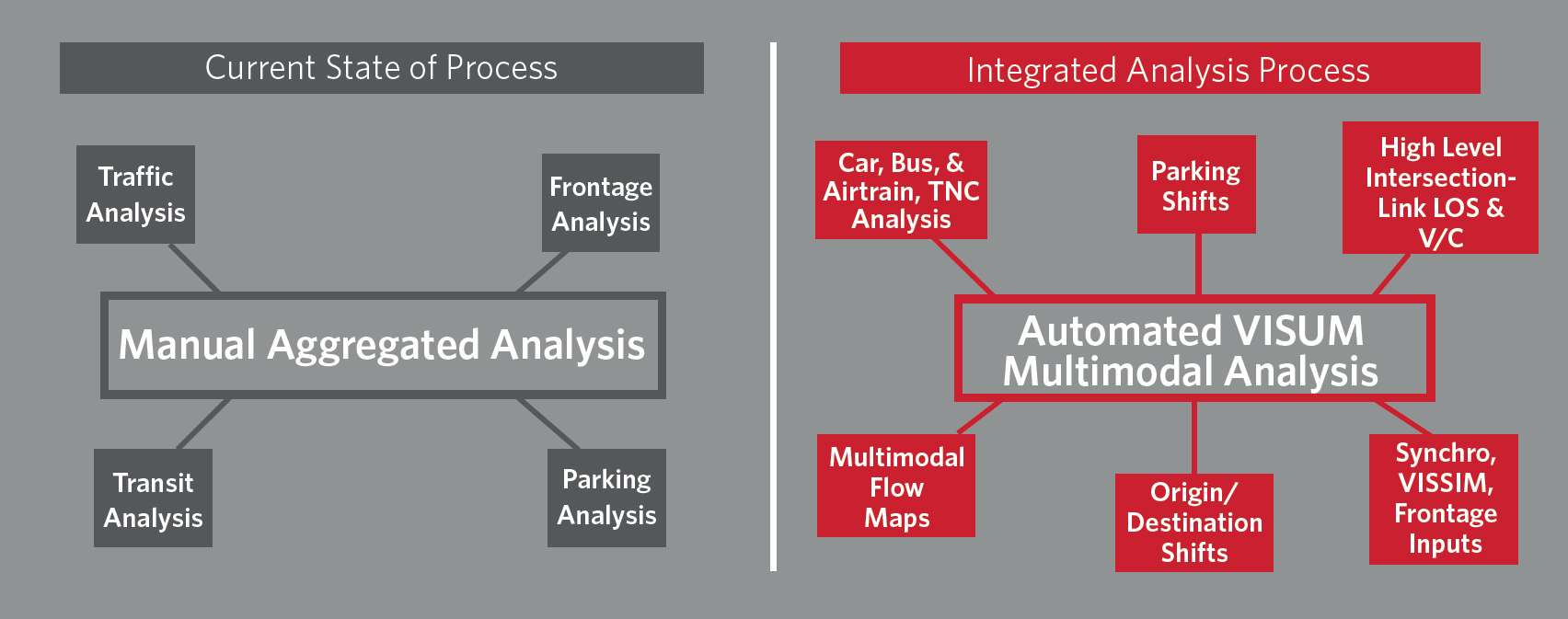HDR Creates Industry-First Customizable Multimodal Tool for Analyzing Airport Landside Traffic

OMAHA, Neb. — HDR has developed an industry-first Airport Landside Multimodal Demand Analysis Tool to help airports identify and explore mobility improvements and management strategies. As airports plan their growth, a better traffic demand analysis enhances project planning, improves the experience for travelers and ultimately saves airports time and money.
Previous processes have provided segmented and isolated analysis of individual modes of transportation that must be manually aggregated. The new tool, built as an add-on to existing travel demand software, automatically integrates all modes of traffic and data into one platform. As a result, airports can:
- Reduce Environmental Assessment documentation development time for Federal Aviation Administration approval
- Streamline project development
- Visually compare the traffic performance of mitigation scenarios
- Easily coordinate with stakeholders using a consistent airport-wide traffic model
- Quickly create analyses for roadway construction staging
Putting Existing Data to Work
The tool has already been applied at John F. Kennedy International Airport in New York City, resulting in streamlined data analysis and standardized development of alternatives. Work that previously would have required months was instead completed in weeks.
“Airports have been collecting increasing amounts of data on facility traffic and demand, but that data has not been converted efficiently into actionable intelligence,” said Senior Traffic Engineer Tony Wang, who developed the new method. “This tool offers a solution that shows the patterns and opportunities hidden in airports’ traffic data.”
The integrated modeling tool mines data from existing sources, integrates airport development and landside travel demand, and allows airports to test future scenarios to optimize planning, design and operations. The information is processed using custom programming scripts developed by HDR, and the integrated model is built in PTV’s VISUM software — an industry standard travel demand and transit planning tool.

“Modeling the demands of all facilities and transportation modes at an airport in an automated tool is a great achievement by Tony and a big benefit for airports,” said Aviation Director Bill Peduzzi. “With this process, we can quickly and accurately assess existing conditions. We can then determine the best future balance of roadways, dedicated lanes, parking and more across an airport, both during construction and in normal operations.”
Flexible and Scalable Traffic Demand Analysis
Flexible as technologies or needs change, the integrated modeling can analyze construction staging, evaluate future air travel demand changes, and assess emerging transportation technology including autonomous vehicles, mobility as a service and even landside congestion pricing. Built to work for any airport, the analysis is also scalable depending on airport size or available data.
“The model allows clients to see the accumulative impacts of traffic under different conditions, including different modes and times. We can test different scenarios and make decisions quickly. It’s a tool to get the team on the same page,” Wang said. Wang developed the tool as part of the HDR Fellowship Program, which provides employees the opportunity to conduct applied research in their markets to develop better solutions for our clients.
For more information about the Airport Landside Multimodal Demand Analysis Tool and its applications for airport design and planning, contact HDR Aviation Director Bill Peduzzi.
About HDR
For over a century, HDR has partnered with clients to shape communities and push the boundaries of what’s possible. Our expertise spans more than 11,000 employees in more than 200 locations around the world — and counting. Our engineering, architecture, environmental and construction services bring an impressive breadth of knowledge to every project. Our optimistic approach to finding innovative solutions defined our past and drives our future. For more information, please visit www.hdrinc.com.


